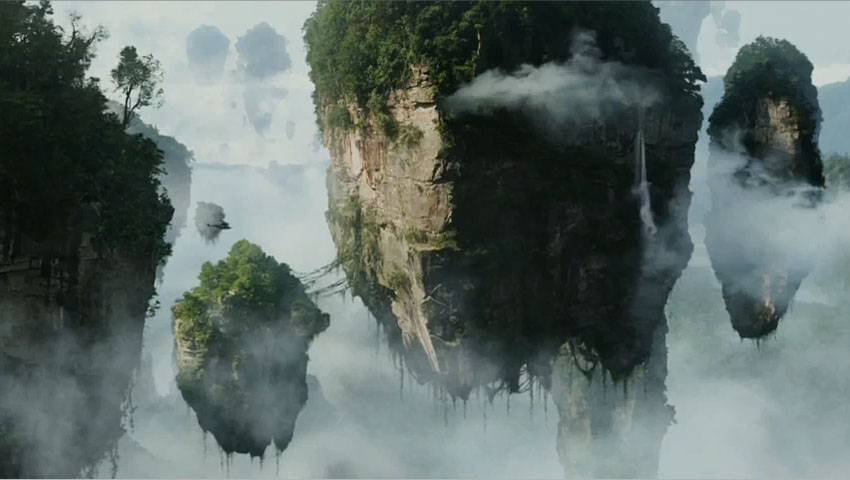Robert Stromberg

Doing a movie with Jim is like going into battle. If you’re not going to pull your weight you’re going to get yelled at. And with good reason, because there’s a lot on the line. That being said, once you make that connection and show that you can pull your weight and that you’re a good soldier then you’re treated with respect. You’re treated with dignity and you’re more of a collaborator at that point. It’s the people who don’t show the same enthusiasm, or don’t come through, or don’t listen, or don’t follow the plan. Those are the people that get yelled at. But generally if you’re doing your job and you’re contributing and you’re collaborating it’s just like working with anybody else.
AS: You mentioned that he’s almost a third production designer. Is he very hands-on, doing sketches and so on?
RS: I think he had more input on the creature designs and the mechanical machines. Of course he had input on everything but less on the environmental stuff. He would of course comment on things, but he saw that cool things were happening and most of the time he did pretty much leave me and a small group to do what we would at will.
AS: How different was it to work with Tim Burton on Alice in Wonderland?
RS: I’ve been fortunate enough to work with a lot of great directors from James Cameron to Tim Burton but also with Steven Spielberg and Peter Weir. The thing that always strikes me as interesting is they all do the same job, they all direct movies, but it’s just that the way they do it is so different. I always find that when I meet a director for the first time I quickly try to figure out what their personality is and then adapt my approach to that. Because every director’s different and the way to present things to them is different.
Early on in Alice in Wonderland I would go over to Tim’s house and office in England with [visual effects supervisor] Ken Ralson. For the first three months or so it was just Ken, Tim, and myself pretty much figuring out what we were doing, just through pencil sketches and doodling and ripping and throwing paper away.
AS: I heard Tim Burton is also an artist…
RS: Tim could be a production designer tomorrow himself. And he has a very specific style that everybody knows. Going into something like that, the first thing I did was re-look at all his films, going back all the way to Beetlejuice, just to get the vibe before I met him. But on Alice he was trying to invent a new style in addition to keeping his traditional fingerprint on it.
It was more a bunch of guys drawing on tablets and saying, What do you think of this, and this, and this? Whereas with Jim I would do something and then we’d get together and he would either like it or not and contribute or not, but if he liked it, it just went on through the process. Whereas Tim would constantly perfect design. Not that Jim didn’t. They’re both artists in the traditional sense but one of them is really down the art trail and the other is down the art-tech trail.
Pingback: David Warren
Pingback: AVATAR and ALICE IN WONDERLAND PRODUCTION DESIGNER:ROBERT STROMBERG « Production Design Foke
Pingback: Kim Sinclair
Pingback: AVATAR and ALICE IN WONDERLAND PRODUCTION DESIGNER:ROBERT STROMBERG
Pingback: LINKS & STUFF: Golden Globes, Syd Mead, True Grit, & Christopher Nolan | Art DepartMENTAL